Laser principle¶
LASER: Light Amplification by Stimulated Emission of Radiation.

Figure 1:A demonstration experiment with a laser
A laser consists of a gain medium, a mechanism to supply energy to it, and something to provide optical feedback. The gain medium (1 in Figure 2 is a material with properties that allow it to amplify light by stimulated emission. Light of a specific wavelength that passes through the gain medium is amplified. For the gain medium to amplify light, it needs to be supplied with energy. This process is called pumping (2 in Figure 2. The energy is typically supplied as an electrical current, or as light at a different wavelength. Pump light may be provided by a flash lamp or by another laser. The most common type of laser uses feedback from an optical cavity – a pair of mirrors on either end of the gain medium: reflector (3 in Figure 2 and output coupler (4 in Figure 2. Light bounces back and forth between the mirrors, passing through the gain medium and being amplified each time. Typically the output coupler is partially transparent and some of the light escapes through it. Depending on the design of the cavity (whether the mirrors are flat or curved), the light coming out of the laser may spread out or form a narrow beam (5 in Figure 2.
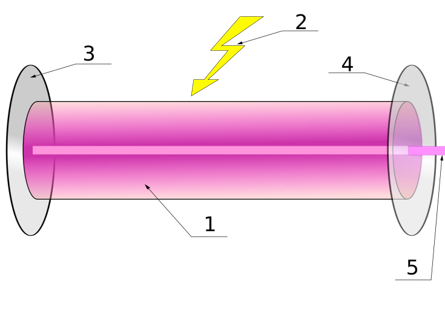
Figure 2:The principle of a laser, with a gain medium (1), pumping (2), a reflector (3), an output coupler (4) and a resulting laser beam (5).
Characteristics of laser light are:
The light emitted from a laser is monochromatic, that is, it is of one wavelength
The light from a laser is said to be coherent, which means that the wavelengths of the laser light are in phase in space and time
Narrow beam with small angle of divergence

Figure 3:Light emitted by a lamp (left) versus light emitted by a laser (right)
Lasers are also characterized by the duration of laser emission, continuous wave or pulsed laser.
Continuous wave (CW) lasers operate with a stable average beam power;
Pulsed laser refers to lasers in which the optical power appears in pulses of some duration (less than 0.25s) at some repetition rate. Pulsed lasers have a higher peak power than is possible in CW lasers.

Figure 4:The ouput of a continuous laser (left), a single pulse laser (center) and a repetitive pulse laser (right).
General safety¶
Behaviour in laser labs¶

There are some general guidelines that always apply when working with lasers:
Only registered laser users or workers are allowed to enter a laser laboratory.
Make sure (at all times!!) that the laser bundle cannot leave the table.
Keep the laser bundle parallel to the table surface.
Use the lower power lasers during alignment of the optical setup.
Block the laser bundle during modifications of the optical setup.
Mount optical components using according the instructions.
Do not use chairs near the optical table.
Do not wear juwellery or watches or any other blinking objects.
Always stay focused and adhere to the regulations.
Do not work alone in a laser laboratory outside office hours (8.00 – 17.00 h) without a written permission and a second knowledgeable person within shouting distance.
It is not allowed to eat or drink in a laser laboratory.
Answer
Always use a laser safety goggle!!!
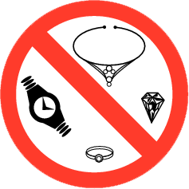
Warning
Do not touch optical surfaces with bare hands and keep unused optics covered.
The delicate nature of optical components requires that special procedures be followed in order to maximize their performance and lifetime. Through everyday use, optics can come in contact with contaminants such as dust, water and skin oils. These contaminants increase scatter off the optical surface and absorb incident radiation, which can create hot spots on the optical surface, resulting in permanent damage. Optical components, like filters and dichroic mirrors with coatings are particularly susceptible to this sort of damage.
ZnSe windows: Focusing with a high power laser onto the ZnSe-lens, toxic gasses may occur by heat decomposition. When ZnSe is damaged by overheating, a large amount of gas and powder may be released. In case of breaking a ZnSe-lens, please avoid touching the substrate with bare hands and avoid breathing in powder and gas.
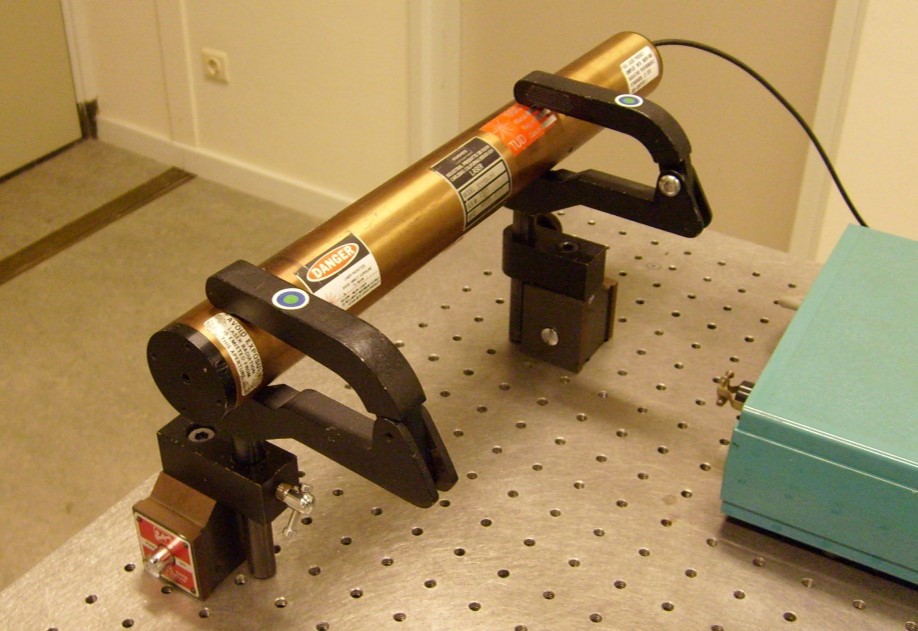
Figure 7:A laser set up
Entering laser labs¶
Laser labs can be recognized from the door signs placed at the entrance next to the door and the warning light “LASER ON”. A laser cannot be powered without this light being ON.
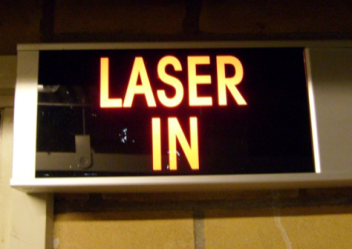
Figure 8:Warning lights above the doors indicate whether the laser in the room is in use.
Procedure to enter a laser lab:
Protect your eyes. If the “LASER ON” light is switched ON, NEVER go in without proper eye protection. Near the door is a box with proper laser safety goggles. Check the protection range of wavelengths before putting them on.
Knock, wait for an answer before entering.
Enter. Laser labs have entrance control. Sweep your TUD key card to get in. You have 20 seconds to get in before the laser shutters get automatically closed (which should be avoided while acquiring data).
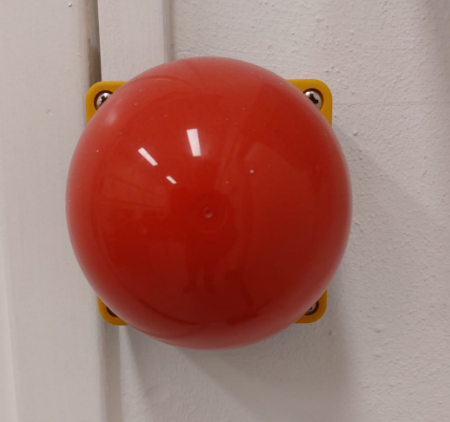
Panic button
In case of emergency the red button inside the laser laboratory can be pushed to stop the lasers immediately, and only the lasers. The emergency button wil be kept pushed in and you have to pul it back to start the lasers again.
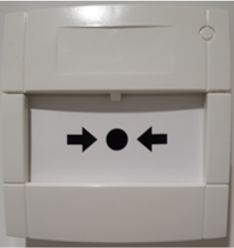
Laser shut down button
The white laser shut down button can be found outside the laser laboratories. Only the emergency response team is allowed to use this button to shut down the laser in case of an emergency in the laser laboratory.
Responsible parties¶
Three responsible parties within the group are distinguished: The local laser safety officer (LSO), the area supervisors (AS) and the laser workers.
The LSO maintains contacts within and outside the group on laser safety. Their function contains the following:
Maintaining inventory of all Class 3b and Class 4 lasers and verifying classification if necessary.
Providing assistance in evaluating and controlling hazards.
Maintaining records of Class 3b and Class 4 laser inspections.
Participating in investigations involving lasers accidents.
Suspending, restricting or terminating the operation of a laser or laser system without adequate hazard controls.
The AS design the layout of the laser setup and make major changes after consulting the LSO. The responsibility of the AS includes:
Must view and understand all available laser safety videos and manuals.
Depending on the faculty, must sign forms affirming that they have read the laser safety manuals, seen the available trainings videos, and understood them.
Must provide specific setup information to complete SBD approval for use of Class 3B or 4 laser setups.
Have to make a Safety Report, including:
A short description of the experiment/project.
A floor plan of the laser area (to scale).
Schematics of the laser system (including all beam paths).
Laser operation instructions.
Standard operating procedures.
Terms of use pertaining to the laser experiment.
Risk analysis.
List of laser users.
The laser workers are the day-to-day users. They use the given setup and typically make minor changes. The responsibility of the laser workers includes:
Must view and understand all available laser safety videos and manuals.
Depending on the faculty, must sign forms affirming that they have read the laser safety manuals, seen the available trainings videos, and understood them.
Laser classification¶
Lasers are divided into several classes depending upon the power or energy of the beam and the wavelength of the emitted radiation. Laser classification is based on the laser’s potential for causing immediate injury to the eye or skin and/or potential for causing fires from direct exposure to the beam or from reflections from reflective surfaces.
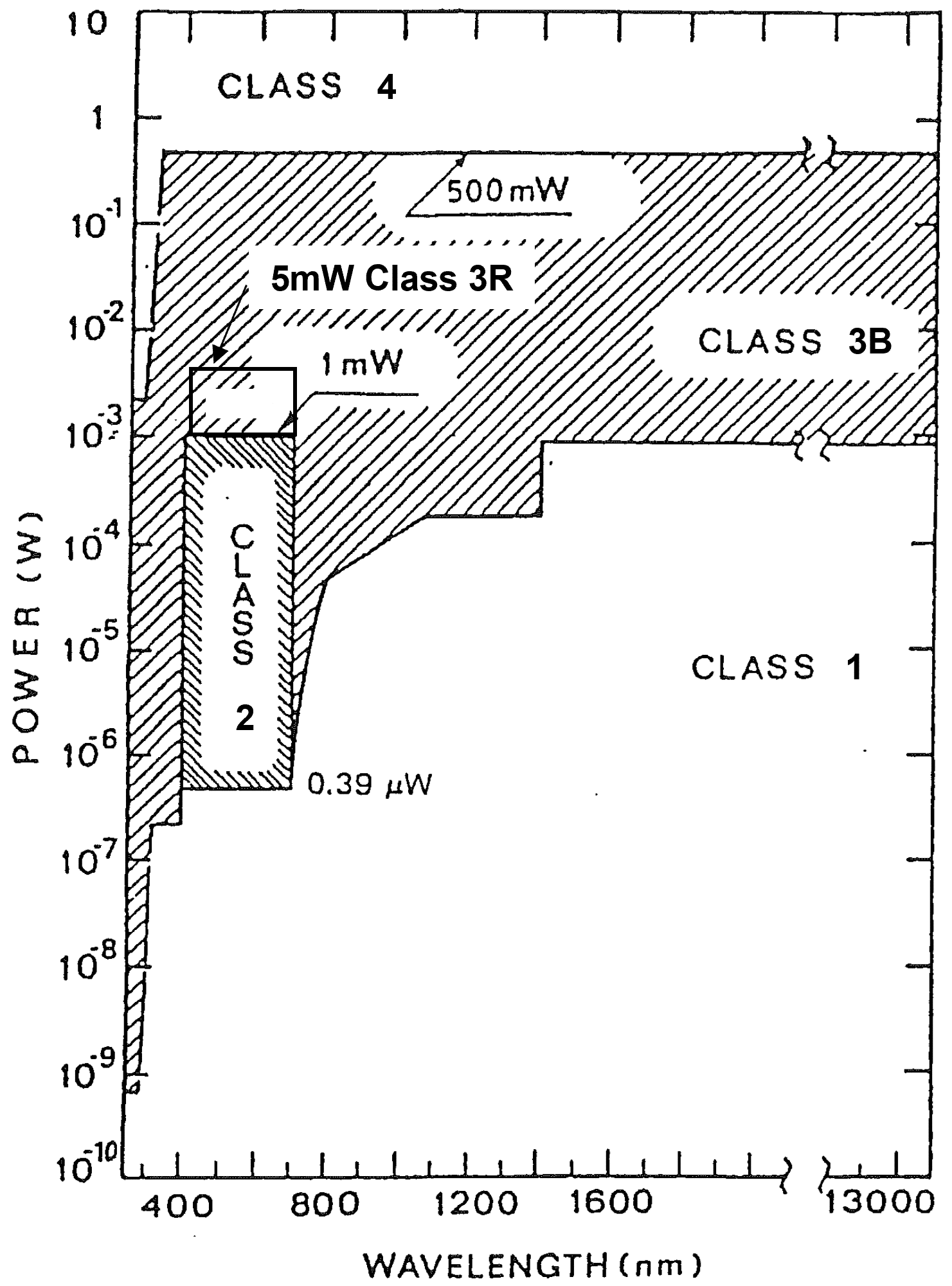
Figure 11:Different laserclasses based on their wavelength and power
Class 1 lasers
Inherently safe; no possibility of eye damage. This can be either because of a low output power (in which cases eye damage is impossible even after hours of exposure), or due to an enclosure that cannot be opened in normal operation without the laser being switched off automatically, such as in CD players.Class 1M lasers
Are considered to be incapable of producing hazardous exposure conditions during normal operation unless the beam is viewed with an optical instrument such as an eye-loupe (diverging beam) or a telescope (collimated-beam); and are therefore exempt from most control measures or other than to prevent potentially hazardous optically aided viewing; and are exempt from other forms of surveillance.Class 2 lasers
Emit radiation in the visible portion of the spectrum and eye protection is normally afforded by the normal human aversion response (blink reflex: t = 0.25 s) to bright radiant sources; may be hazardous if viewed directly for extended periods of time.Class 2M lasers
Emit radiation in the visible portion of the spectrum and eye protection is normally afforded by the normal human aversion response (blink reflex: t = 0.25 s) to bright radiant sources; are potentially hazardous if viewed with certain optical aids or for extended periods of time.Class 3R lasers
Are those that normally would not produce injury if viewed only momentarily with the unaided eye; may present a hazard if viewed directly or using collecting optics (e.g. telescope, microscope, or binoculars), but is normally not a diffuse reflection or fire hazard.Class 3B lasers
Will cause damage if the beam enters the eye directly. This generally applies to lasers powered from 5–500 mW. Lasers in this category can easily cause permanent eye damage from exposures of 1/100th of a second or less depending on the strength of the laser. A diffuse reflection is generally not hazardous but specular reflections can be just as dangerous as direct exposures. Protective eyewear is always recommended when experimenting with 3B-lasers. Lasers at the high power end of this class may also present a fire hazard and can lightly burn skin.Class 4 lasers
Highly dangerous. Lasers in this class have output powers of more than 500 mW in the beam, or produce intense pulses of light. These are cutting, etching and surgical lasers and can cause damage without being magnified by the optics of the eye. Diffuse reflections of the laser beam can be hazardous to skin or eye within the Nominal Hazard Zone.
Laser hazard¶
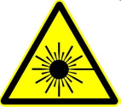
Generally one can state that a laser is more dangerous with:
Higher power
Higher intensity means more power per time that can cause damage when the light is absorbedLess visibility of its wavelength
Infrared and ultraviolet light will not cause the blinking reflex (aversion response)of the human eye, This means the retina will be exposed longer and the damage will therefore be greater.Higher intensity (stronger focus of the light)
Stronger focus means more power per area which means that the damage may be more but at the same time worse.
Specific and non-specific laser hazards¶
Specific laser hazards
Lasers can cause damage to the eye and to the skin, these are specific laser hazards:
Photochemical damage
Light triggers a chemical reaction in tissue Photochemical damage occurs mostly with short-wavelength (blue and ultra-violet) light and can be accumulated over the course of hours.Photothermal damage
Thermal damage or burn occurs when tissues are heated to the point where denaturation of proteins occur. Photothermal damage occurs mostly with long-wavelength (infra-red) light.
Non-specific laser hazards
Non specific laser hazards can be grouped into four general groupings:
Chemical hazards which include those associated with dyes and solvents, compressed gasses and laser-generated air contaminants (e.g. Ozone);
Hazardous biological agents include cells and micro-organisms and some laser-generated air contaminants;
Physical hazards are plasma radiation, collateral radiation (such as X-rays), electricity and noise;
Other hazards include fires, explosions, ergonomics and robotics.
Laser radiation effects on the eye¶
Our eyes are very vulnerable to laser light, even at low power. Since laser light is typically bright, coherent and directive (think about a laser pointer), your eye will easily focus all this light in a tiny spot on the retina, which can potentially create irreversible damages. A laser beam can be focused to an intensity on the retina which may be up to 200000 times higher than at the point where the laser beam enters the eye. Visible light causes burns of the retina, UV-light (300 – 400 nm) causes clouding of the eye lens and infrared light mainly causes thermal damage to the retina.
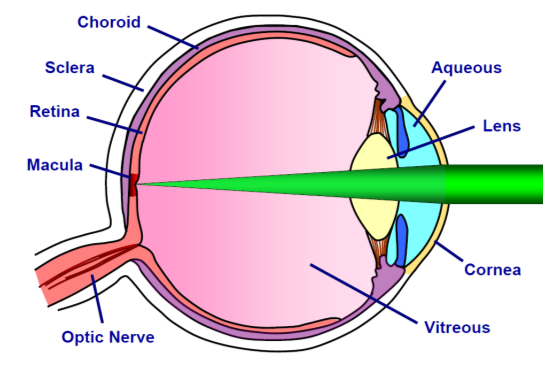
Figure 13:A schematic illustration of a laser beam entering an eye.
Effects of lasers on the eye are wavelength-dependent:
Ultraviolet-B and Ultraviolet-C (100 - 315 nm)
The surface of the cornea absorbs all UV of these wavelengths which produce a photokeratitis (welders flash) by a photochemical process, which cause a denaturation of proteins in the cornea. This is a temporary condition because the corneal tissues regenerate very quickly.Ultraviolet-A (315 - 400 nm)
The cornea, lens and aqueous humour allow Ultraviolet radiation of these wavelengths and the principal absorber is the lens. Photochemical processes denature proteins in the lens resulting in the formation of cataracts.Visible light and Infrared-A (400 - 1400 nm)
The cornea, lens and vitreous fluid are transparent to wavelengths. Damage to the retinal tissue occurs by absorption of light and its conversion to heat by the melanin granules in the pigmented epithelium or by photochemical action to the photoreceptor. The focusing effects of the cornea and lens will increase the irradiance on the retina by up to 100,000 times. For visible light 400 to 700 nm the aversion reflex which takes 0.25 seconds may reduce exposure causing the subject to turn away from a bright light source. However, this will not occur if the intensity of the laser is great enough to produce damage in less than 0 25 sec. or when light of 700 - 1400 nm (near infrared) is used, as the human eye is insensitive to these wavelengths.Infrared-B and Infrared-C (1400 to 1.0 x 10^6 nm)
Corneal tissue will absorb light with a wavelength longer than 1400 nm. Damage to the cornea results from the absorption of energy by tears and tissue water causing a temperature rise and subsequent denaturation of protein in the corneal surface.
Laser radiation effects on skin¶
The layers of the skin, which are of concern in a discussion of laser hazards to the skin, are the epidermis, the dermis and the subcataneous tissue.
The epidermis is the outer layer of skin. The thickness of the epidermis varies in different types of skin. It is the thinnest on the eyelids at 0.05 mm and the thickest on the palms and soles at 1.5 mm.
The dermis also varies in thickness depending on the location of the skin. It is 0.3 mm on the eyelid and 3.0 mm on the back. The dermis is composed of three types of tissue that are present throughout - not in layers. The types of tissue are collagen, elastic tissue, and reticular fibres.
The subcutaneous tissue is a layer of fat and connective tissue that houses larger blood vessels and nerves. This layer is important is the regulation of temperature of the skin itself and the body. The size of this layer varies throughout the body and from person to person.
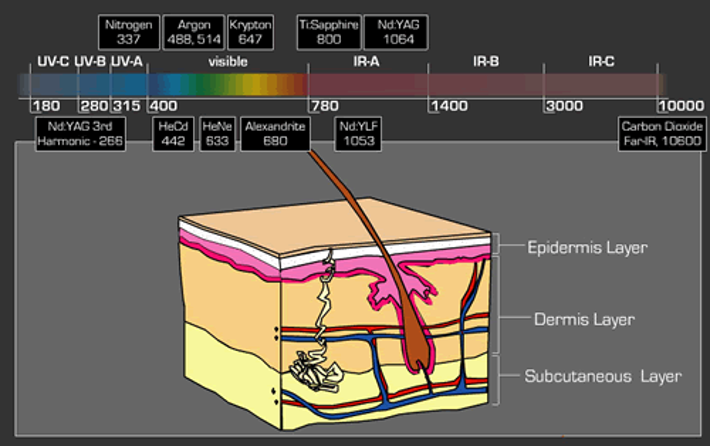
Figure 14:A schematic illustration of the layers of the skin.
A sensation of warmth resulting from the absorption of laser energy normally provides adequate warning to prevent thermal injury to the skin from almost all lasers except for some high-power far-infrared lasers. Any irradiance of 0.1 W/cm2 produces a sensation of warmth at diameters larger than 1 cm. On the other hand, one tenth of this level can be readily sensed if a large portion of the body is exposed. Long-term exposure to UV lasers has been shown to cause long-term delayed effects such as accelerated skin aging and skin cancer. Even so, damage can occur if the lasers are not handled carefully. The effects depend on the laser type:
Exposure in the UV-B range (280 nm - 315 nm) is most injurious to skin. In addition to thermal injury caused by ultraviolet energy, there is the possibility of radiation carcinogenesis from UV-B either directly on DNA or from effects on potential carcinogenic intracellular viruses.
Exposure in the shorter UV-C (0. 200 µm-0.280 µm) and the longer UV-A ranges seems less harmful to human skin. The shorter wavelengths are absorbed in the outer dead layers of the epidermis (stratum corium) and the longer wavelengths have an initial pigment-darkening effect followed by erythema if there is exposure to excessive levels.
IR-A wavelengths of light are absorbed by the dermis and can cause deep heating of skin tissue.
Laser labs¶
Laser environment¶
The laser environment covers:
Location of the laser equipment
e.g. inside a building within an enclosed and dedicated laser working area; inside within a more-widely accessible or open-plan working area; outside;State of the working area from an equipment viewpoint
e.g., the influence on equipment of temperature, humidity, vibration, dust etc. and the possibility of disturbances/damage by col isions with persons;State of the working area from a personnel viewpoint
e.g., spacious or cluttered; clean or dirty; wel -lit or dark; ease of use and ease of operation of the laser and associated equipment;Level of access
e.g., localised restricted area within premises having no public access; unrestricted area within premises having no public access; public access areas.
Laser labs requirements (basic)¶
All rooms must have solid window shields, which can be lifted.
A proper solid rim on the optical tables keeps eventual stray laser beams on the optical table, so computer workplaces remain safe for the users.
The laser interlock has to be connected to the panic button of the safety system
The laser shutter or interlock has to be connected to the door.
Laser shutters should shut down the main laser beam
All lasers must be registered in the department’s web-based safety database and a laser safety report has to be written for every laser-based setup
Area Supervisors and the laser safety-coordinator share the responsibility of fulfilling these requirements
Laser control measures¶
General control measures may be broken down to two types:
Administrative controls such as signage, procedures, etc.;
Engineering controls such as beam housing, shutters, interlocks.
The Checklist Laser Safety (ask your LSO or HSE advisor) provides a summary of these control measures. In general:
Laser safety report is mandatory when purchasing a laser in Class 3B or higher; In a laser safety report the hazards are identified, the risks are evaluated and the measures taken to reduce these risks to an acceptable level are described.
Each department has its own Laser Safety Officer. All laser users and workers need to be instructed and registered by the Laser Safety Officer;
Laboratories, in which lasers Class 3B or higher are operated, must comply with the IAVM 12 or NPR-IEC 60825 directives.
Control measures as a function of the laser class
| Laser class | Nature of hazard | Example of controlled area | Outline of protective control measures |
|---|---|---|---|
| Class 1 & Class 2 | Minimal (N.B. Embedded lasers may present associated hazards) | Unrestricted; i.e., a designated laser area is not normally required | Follow warnings on labels and manufacturer’s instructions for safe use |
| Divergent-beam Class 1M & Divergent-beam Class 2M | Localised eye hazard if optical viewing instruments such as eye-loupes are used | Localised; can be open-plan, if effective procedural control is exercised over the immediate area around the laser | Training recommended; Prevent use of eye-loupes and other magnifiers in the vicinity of the laser; Prevent re-focusing or collimation of the beam |
| Collimated-beam Class 1M & Collimated-beam Class 2M | Long range eye hazard if optical viewing instruments such as binoculars or telescopes are used | Enclosed or open-plan; Acces to the ENOHA to be controlled by procedural means, i.e. by the use of signs, instructions and training; Where open-plan, public access into the ENOHA must be prevented | Training required; LSO (Laser Safety Officer) recommended; Prevent use of telescopes and binoculars; Prevent re-focusing of the beam |
| Class 3R | Low-level eye hazard | Unrestricted; i.e. safety depends on responsible use | Training recommended; Prevent direct eye exposure |
| Class 3B | Eye hazard; Possible skin hazard at higher levels of class | Enclosed and interlock-protected; i.e. access controlled by engineering means. | Training and LSO required; Ensure key security; Enclose as much of beam as possible, using complete enclosure where feasible; Implement safety systems of work; Use personal protective equipment (PPE) if exposure risk is unavoidable |
| Class 4 | Eye and skin hazard; Possible fire and fume hazards | Enclosed and interlock-protected; i.e. access controlled by engineering means. | Training and LSO required; Ensure key security; Enclose as much of beam as possible, using complete enclosure where feasible; Implement safety systems of work; Use personal protective equipment (PPE) if exposure risk is unavoidable |
::label table:measureslaser
There is personal protection as well:
Eyewear requirements
Laser protective eyewear shal be specifically designed to withstand either direct or diffusely scattered beams depending upon the anticipated circumstances of exposure. The protective filter and frame shall exhibit a damage threshold for a specified exposure time, typically 10 seconds.
Labelling of Laser Safety Eyewear Laser safety eyewear shall be label ed according to NEN-EN-207 with type of laser, wavelength(s) and the maximum power the eyewear provides protection for or with the optical density and the wavelength(s) the eyewear provides protection for. Additional labelling may be added for quick identification of eyewear in multiple laser laboratories. Examples of eyewear labelling are shown in Figure 15 and in Figure 16.

Figure 15:An example of eyewear labelling.
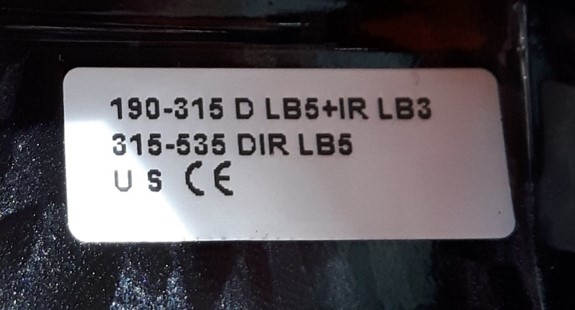
Figure 16:An example of eyewear labelling.
Safety test¶
What is the primary hazard when working with Class 3B lasers?
A) Electrical shock
B) Skin burns
C) Eye injury from direct or scattered radiation
D) Auditory damage
Before starting an experiment involving lasers, what safety measure should be taken first?
A) Ensure all optical components are properly aligned
B) Verify that the laser is operating within its expected parameters
C) Conduct a risk assessment and implement appropriate control measures
D) Turn on the laser to warm it up
Which of the following is NOT a recommended practice for laser safety?
A) Wearing laser safety goggles that are specific to the laser’s wavelength
B) Using beam shutters or caps when the laser is not in active use
C) Keeping the beam at waist level
D) Posting warning signs outside the lab when lasers are in use
What should you do if your skin is exposed to a laser beam?
A) Immediately wash the area with soap and water
B) Apply a cold compress to the affected area
C) Seek medical attention and report the incident to the safety officer
D) Continue working but avoid further exposure
Which of the following materials is safe to use in the vicinity of laser beams?
A) Highly reflective surfaces
B) Matte black materials
C) Transparent glass
D) Fluorescent materials
What is the purpose of an interlock system in a laser lab?
A) To automatically adjust the laser’s power
B) To ensure the laser only operates when the lab door is closed
C) To keep the laser beam aligned with the optical components
D) To monitor the temperature within the lab
How can you minimize the risk of fire in a laser lab?
A) Use lasers with lower power ratings
B) Ensure all materials near the beam path are non-flammable
C) Keep the doors open to improve ventilation
D) Operate lasers without continuous supervision
Which type of laser safety goggles should be used when working with a 532 nm green laser?
A) Goggles rated for UV light protection
B) Goggles that block or absorb green light specifically
C) Any darkly tinted goggles
D) Goggles rated for infrared protection
What action should be taken if a laser is malfunctioning?
A) Attempt to repair it while it’s still powered on
B) Shut down the laser and notify the responsible safety officer
C) Continue using the laser but at a lower power setting
D) Cover the laser with a cloth to diffuse the beam
Which of the following is a correct procedure for storing laser equipment after use?
A) Leaving the laser on standby for quick reuse
B) Disconnecting the laser and covering optical elements
C) Storing lasers without securing them in a designated area
D) Placing reflective materials near the laser to protect it
Which laser class is considered safe under all conditions of normal use, including the use of optical instruments?
A) Class 1
B) Class 2
C) Class 3R
D) Class 4
In case of a laser beam hitting someone’s eye, what is the immediate first aid step?
A) Rubbing the eyes to reduce pain
B) Washing the eyes with water
C) Blinking rapidly to encourage tearing
D) Avoiding any action and seeking medical evaluation as soon as possible
What is the significance of the Maximum Permissible Exposure (MPE) level in laser safety?
A) It determines the highest level of laser radiation to which a person may be exposed without harmful effect.
B) It specifies the minimum required safety rating for laser goggles.
C) It defines the maximum output power of lasers allowed in research labs.
D) It indicates the highest level of noise generated by the laser equipment that is considered safe.
Which of the following practices is critical when aligning a laser beam?
A) Using the highest possible laser power for visibility
B) Wearing reflective clothing to easily spot any stray beams
C) Aligning the beam at eye level for better accuracy
D) Starting alignment at the lowest possible power and wearing appropriate eye protection
Why is it important to implement a beam stop or trap at the end of the beam path in a laser setup?
A) To prevent unauthorized use of the laser
B) To capture and analyze the laser beam for quality control
C) To prevent the beam from reflecting back into the laser and causing damage
D) To safely absorb the laser energy and prevent stray reflections